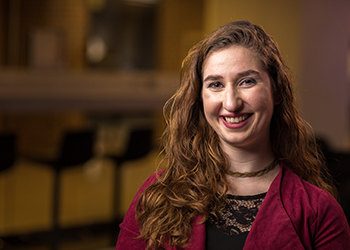MSU’s Media Sandbox Aims for First Place
Additional support could add visiting artists and vital technology upgrades
MSU’s Media Sandbox Aims for First Place
Additional support could add visiting artists and vital technology upgrades
November 25, 2014David Wheeler is a media power house. And he won’t settle for second-tier. He wants his program at Michigan State University to be the nation’s best. MSU lured Wheeler from the bright lights of Los Angeles last year to direct what it calls its Media Sandbox.
The initiative encompasses studies in journalism, advertising, film, television and game design. They’re housed within the Department of Media and Information, under the oversight of the College of Communication Arts and Sciences.
At the end of the pipeline are “trans-media” professionals, Wheeler says. They might include an author who pens a novel and then adapts it for film and the gaming industry.
That’s the kind of training Media Sandbox students need, Wheeler says. And he believes with outside support, Media Sandbox could become number one in the nation.
“But we need to build up,” he says. “We need to be more competitive.”
An honors graduate of the London Film School, Wheelers career includes stints as a writer, director, cinematographer and video game designer. He says to be successful, students now must excel across communications disciplines.
Students are hungry for the training. Media Sandbox was launched nearly three years ago. Initially, it was expected to attract 300 students. It’s been such a huge draw that now, Media Sandbox annually fills 2,000 seats but with the same number of faculty as when it began.
“Make no mistake,” Wheeler says, “those faculty members are all tops in their fields. And they provide an excellent educational foundation. But the explosive demand by new students seeking to enroll in multi-media training is straining classrooms, teachers, facilities and labs.”
“We don’t even have a motion capture studio,” says Wheeler. That’s almost unheard of even at schools much smaller than a research university of MSU’s caliber.
In addition to new technology, Wheeler ultimately hopes to inspire the creation of an endowment to bring in visiting artists.They would share their experiences as well as the latest industry trends and practices.
Writers, directors, designers and social media gurus could be among those invited to teach, lecture, provide workshops, and give presentations on a rotating basis.
“Media is changing at lighting speed,” Wheeler says. “I think we need people with professional experience to give more dimension to what our students are currently learning.Visiting artists could also serve to connect students to a richer field of potential professional contacts and even employers.”
Moving the program up in national rankings is not about ego. Wheeler says it’s imperative if MSU is going to produce media communications professionals with the skills and savvy to land good jobs in their highly competitive fields.
“We are doing something very innovative, something that nobody else is doing. But we need to push it. We need to accelerate our academic competitiveness. And we could use a lot more help.”




